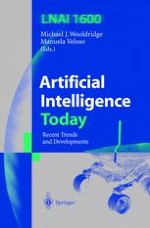Artificial Intelligence is one of the most fascinating and unusual areas of academic study to have emerged this century. For some, AI is a true scientific discipline, that has made important and fundamental contributions to the use of computation for our understanding of nature and phenomena of the human mind; for others, AI is the black art of computer science.
Artificial Intelligence Today provides a showcase for the field of AI as it stands today. The editors invited contributions both from traditional subfields of AI, such as theorem proving, as well as from subfields that have emerged more recently, such as agents, AI and the Internet, or synthetic actors. The papers themselves are a mixture of more specialized research papers and authorative survey papers.
The secondary purpose of this book is to celebrate Springer-Verlag's Lecture Notes in Artificial Intelligence series.
